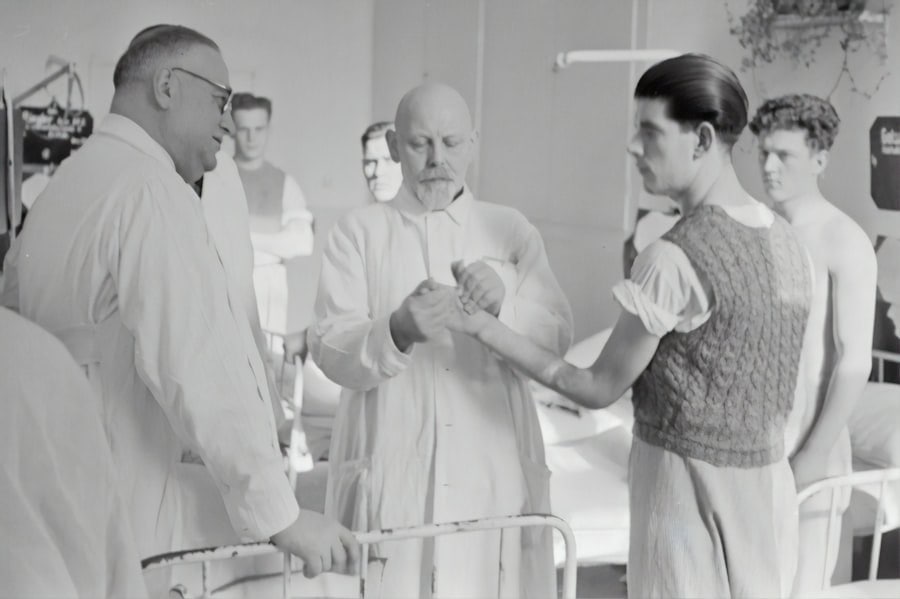The advent of Industry 4.0 has ushered in a new era of manufacturing characterized by the integration of advanced technologies, including the Internet of Things (IoT), big data analytics, and artificial intelligence. At the heart of this transformation lies the emergence of collaborative robots, or cobots, which are designed to work alongside human operators in a shared workspace. Unlike traditional industrial robots that operate in isolation, cobots are engineered to enhance human capabilities, improve productivity, and ensure safety in manufacturing environments.
This paradigm shift not only redefines the role of automation in factories but also fosters a more synergistic relationship between humans and machines. Collaborative robots are equipped with advanced sensors, machine learning algorithms, and user-friendly interfaces that allow them to adapt to various tasks and environments. Their design prioritizes safety, enabling them to operate in close proximity to human workers without the need for extensive safety barriers.
This capability is particularly beneficial in smart factories, where flexibility and adaptability are paramount.
Key Takeaways
- Collaborative robots, or cobots, are designed to work alongside humans in smart factories, enhancing productivity and flexibility in manufacturing processes.
- Advantages of collaborative robots in smart factories include increased efficiency, improved safety, reduced operational costs, and the ability to perform repetitive tasks with precision.
- Challenges and limitations of collaborative robots in smart factories include high initial investment, limited payload capacity, and the need for specialized training and maintenance.
- Integration of collaborative robots with artificial intelligence in smart factories enables advanced capabilities such as predictive maintenance, autonomous decision-making, and adaptive learning.
- Future trends and innovations in collaborative robots for smart factories include the development of more advanced sensors, improved human-robot interaction, and the use of collaborative robots in new industries and applications.
Advantages of Collaborative Robots in Smart Factories
One of the most compelling advantages of collaborative robots is their ability to enhance productivity while maintaining a high level of safety. Cobots can take on repetitive and physically demanding tasks, allowing human workers to focus on more complex and value-added activities. For instance, in an automotive assembly line, a cobot can handle the installation of heavy components, reducing the physical strain on workers and minimizing the risk of workplace injuries.
Moreover, collaborative robots are designed for versatility and ease of use. Many cobots come with intuitive programming interfaces that allow operators to quickly teach them new tasks without requiring extensive technical knowledge.
This adaptability is crucial in smart factories where production lines may need to be reconfigured frequently to accommodate different products or variations. For example, a cobot used in electronics manufacturing can be easily reprogrammed to assemble different types of devices, thus reducing downtime and increasing responsiveness to market demands. The ability to rapidly switch between tasks makes cobots an invaluable asset in dynamic manufacturing environments.
Challenges and Limitations of Collaborative Robots in Smart Factories
Despite their numerous advantages, the implementation of collaborative robots in smart factories is not without challenges. One significant limitation is the initial investment required for integrating cobots into existing production systems. While the long-term benefits often outweigh these costs, smaller manufacturers may find it difficult to allocate resources for such investments.
Additionally, there may be concerns regarding the return on investment (ROI) associated with deploying cobots, particularly if the expected productivity gains do not materialize as anticipated. Another challenge lies in the need for effective human-robot collaboration. While cobots are designed to work alongside humans, ensuring seamless interaction requires careful planning and training.
Workers must be educated on how to operate alongside these machines safely and effectively. Misunderstandings or lack of familiarity with cobot operations can lead to inefficiencies or even accidents. Furthermore, there is a need for ongoing maintenance and updates to ensure that cobots function optimally over time.
This necessitates a commitment from manufacturers to invest not only in the technology itself but also in the training and development of their workforce.
Integration of Collaborative Robots with Artificial Intelligence in Smart Factories
The integration of artificial intelligence (AI) with collaborative robots represents a significant advancement in smart factory operations. AI enhances the capabilities of cobots by enabling them to learn from their environment and improve their performance over time. For instance, machine learning algorithms can analyze data from sensors embedded in cobots to identify patterns and optimize their movements for greater efficiency.
This capability allows cobots to adapt to changes in production processes or variations in product design without requiring extensive reprogramming. Furthermore, AI-powered cobots can facilitate predictive maintenance by monitoring their own performance and identifying potential issues before they lead to breakdowns. This proactive approach minimizes downtime and ensures that production lines remain operational.
In addition, AI can enhance decision-making processes within smart factories by providing real-time insights based on data collected from various sources, including IoT devices and production systems. By leveraging AI, manufacturers can achieve greater operational efficiency and responsiveness, ultimately leading to improved competitiveness in the market.
Future Trends and Innovations in Collaborative Robots for Smart Factories
As technology continues to evolve, several trends are emerging that will shape the future of collaborative robots in smart factories. One notable trend is the increasing emphasis on human-centric design principles. Future cobots are likely to be developed with an even greater focus on ergonomics and user experience, ensuring that they seamlessly integrate into human workflows.
This could involve advancements in haptic feedback systems that allow operators to feel more connected to the tasks being performed by cobots. Another trend is the rise of swarm robotics, where multiple collaborative robots work together as a coordinated unit to accomplish complex tasks. This approach mimics natural systems observed in nature, such as flocks of birds or schools of fish, where individual units collaborate to achieve a common goal.
In a smart factory setting, swarm robotics could enable more efficient material handling or assembly processes by allowing multiple cobots to communicate and adapt their actions based on real-time conditions.
Impact of Collaborative Robots on the Future of Manufacturing Industry
The impact of collaborative robots on the manufacturing industry is profound and multifaceted. As manufacturers increasingly adopt cobots, we can expect significant shifts in workforce dynamics and job roles. While there may be concerns about job displacement due to automation, collaborative robots are more likely to augment human capabilities rather than replace them entirely.
By taking over repetitive tasks, cobots free up human workers to engage in higher-level problem-solving and creative activities that require critical thinking. Moreover, the integration of collaborative robots can lead to enhanced product quality and consistency. Cobots are capable of performing tasks with precision and accuracy that may exceed human capabilities, particularly in high-volume production scenarios.
This improvement in quality not only benefits manufacturers through reduced waste and rework but also enhances customer satisfaction by delivering products that meet stringent quality standards.
Ethical and Social Implications of Collaborative Robots in Smart Factories
The rise of collaborative robots brings forth important ethical and social considerations that must be addressed as they become more prevalent in manufacturing environments. One key concern revolves around workforce displacement and the potential for job loss as automation becomes more widespread. While it is true that cobots can take over certain tasks, it is essential for companies to invest in retraining programs that equip workers with new skills relevant to an evolving job market.
This proactive approach can help mitigate fears surrounding job security while fostering a culture of continuous learning. Additionally, there are ethical implications related to data privacy and security as collaborative robots become increasingly connected through IoT networks. The data collected by these machines can provide valuable insights into production processes but also raises concerns about how this information is stored, shared, and utilized.
Manufacturers must establish robust data governance frameworks that prioritize transparency and accountability while ensuring compliance with relevant regulations.
The Potential of Collaborative Robots in Shaping the Future of Smart Factories
The potential of collaborative robots in shaping the future of smart factories is immense, offering opportunities for increased efficiency, enhanced safety, and improved product quality. As manufacturers navigate the complexities of modern production environments, cobots stand out as versatile tools that can adapt to changing demands while complementing human labor. The ongoing integration of AI technologies further amplifies their capabilities, paving the way for smarter manufacturing processes.
However, realizing this potential requires a thoughtful approach that considers not only technological advancements but also the ethical and social implications associated with automation. By fostering collaboration between humans and machines while prioritizing workforce development and data security, manufacturers can harness the full benefits of collaborative robots while contributing positively to society at large. As we look ahead, it is clear that collaborative robots will play a pivotal role in redefining the landscape of manufacturing for years to come.
If you are interested in the latest marketing technologies for 2023, you may want to check out the article What Are the Marketing Technologies for 2023. This article provides insights into the cutting-edge tools and strategies that businesses are using to stay ahead in the digital marketing landscape. Just like the advancements in collaborative robots are shaping the future of smart factories, staying informed about the latest marketing technologies can help businesses thrive in the ever-evolving digital world.
FAQs
What are collaborative robots?
Collaborative robots, also known as cobots, are robots designed to work alongside humans in a shared workspace. They are specifically built to be safe and to interact with humans in a collaborative manner.
What are smart factories?
Smart factories are manufacturing facilities that have been enhanced with advanced technologies such as automation, artificial intelligence, and the Internet of Things (IoT) to improve efficiency, productivity, and flexibility in the production process.
How are collaborative robots being used in smart factories?
Collaborative robots are being used in smart factories to perform a variety of tasks, including assembly, packaging, quality control, and material handling. They work alongside human workers to increase productivity and efficiency.
What are the benefits of using collaborative robots in smart factories?
Some of the benefits of using collaborative robots in smart factories include increased productivity, improved worker safety, reduced production costs, and the ability to quickly adapt to changes in production demands.
What are the challenges of implementing collaborative robots in smart factories?
Challenges of implementing collaborative robots in smart factories include the initial investment cost, the need for specialized training for workers, and the potential for job displacement for some workers.
What is the future outlook for collaborative robots in smart factories?
The future outlook for collaborative robots in smart factories is promising, with continued advancements in technology leading to more sophisticated and capable cobots. As the technology matures, collaborative robots are expected to play an increasingly important role in the manufacturing industry.



